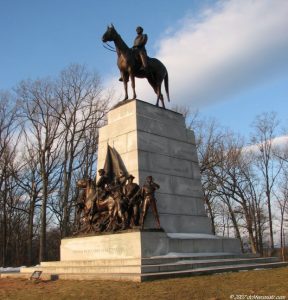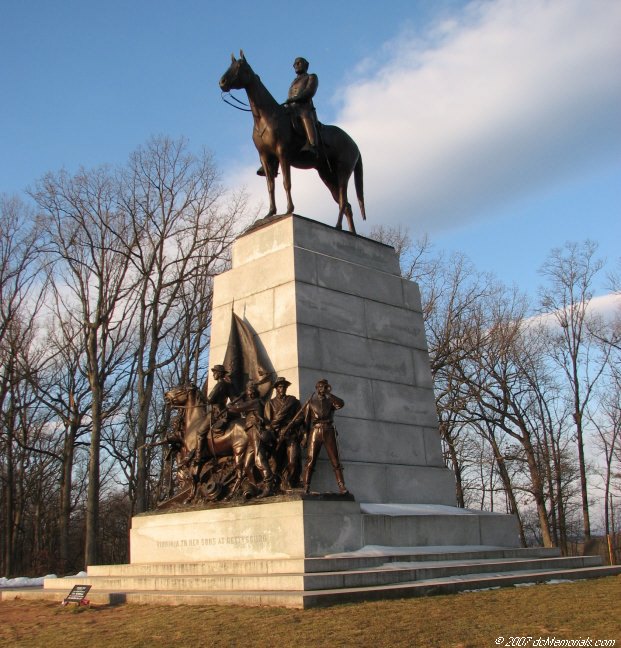 Nothing.
Nothing.
Historian Kevin Levin has a thought provoking essay on his blog Civil War Memory, about monuments to Confederates located in National Parks. Levin makes the point that these monuments, maintained with federal tax dollars, were primarily built during the Jim Crow era of American History. He rightly asks the question:
These monuments do, however, raise some of the very same issues that are currently being debated in communities across the country. If the Lee monument in Charlottesville is problematic than what can be said about Gettysburg’s Lee statue? Lee dominates Seminary Ridge making it possible for anyone to imagine a glorious Confederate victory whenever they choose. Not too far away the soldiers of North Carolina inch forward with their last ounce of strength in the direction of the farm of a free black family that was forced to flee when Lee’s army of slave catchers entered Pennsylvania in late June 1863.
I can see his point, but I view battlefield monuments much different than monuments in city streets on town squares.
My position is well documented, I believe that those who took up arms against the United States of America are now, and were then, traitors. Lee, Longstreet, Jackson, and the like, were all officers in the army of the United States of American and swore an oath to protect and defend the Constitution of the United States against all enemies foreign and domestic. They betrayed that oath, which does not end when one resigns their commission, when they took up arms, and command others to take up arms, against the United States of America. We should not glamorize our former enemies in America!
But monuments on the battlefield tell a much different story for a much different purpose. Sure, Robert E. Lee is depicted mounted on his horse Traveler is a majestic pose, overlooking the field at Gettysburg where Pickett’s Charge took place, but it gives one the opportunity to discuss the battle and the events that brought it to life.
Statues or monuments on any battlefield are part of the narrative that can be used to tell the entire story if they are interpreted that way. Talking about the battle of Gettysburg without discussing the events that led up to it and the reasons for the war place these monuments in the abstract and I can see how they can be used as a memorial to white and southern pride, but interpreted in the right way, they will not.
I agree that monuments to traitors should be removed from cities and towns across America whatever they once were they are now symbols used by those who hate, as we witnessed recently in Charlottesville, Virginia. The Confederate Battle Flag and any other symbols of the Confederacy should be relegated to museums and battlefields where they can be portrayed in their proper position in the telling of the story.
Some will say that the removal of these monuments and statues from cities and towns rewrites history, and I say, as many others do as well, that their erection in the first place, was an attempt to rewrite history and to prolong the Lost Cause Narrative.
Take down the monuments in the cities and towns but leave those up, on the battlefields where hundreds of thousands gave their lives, some to prolong a history and heritage of hate and some to fight against that very hate and preserve the union.

